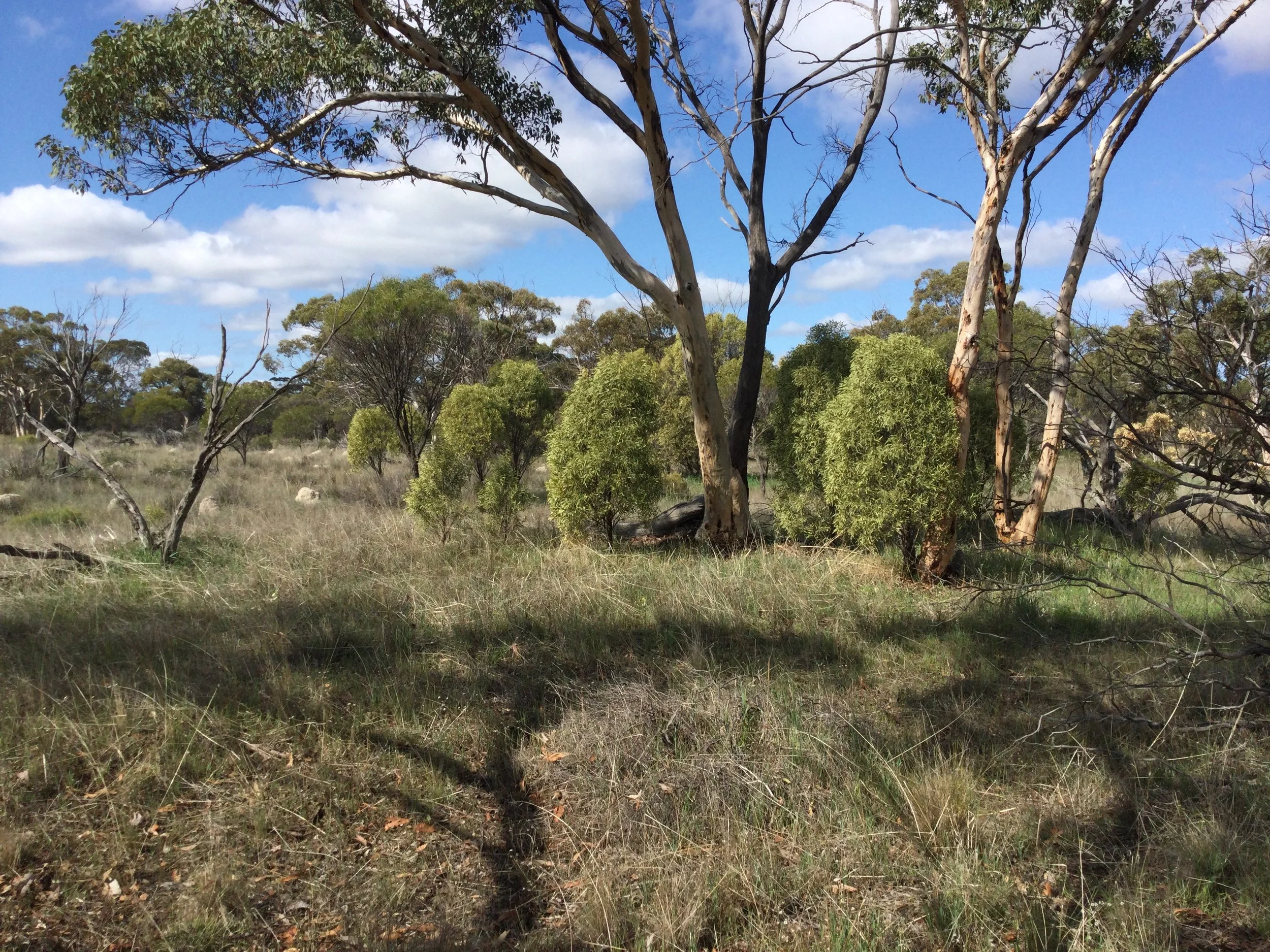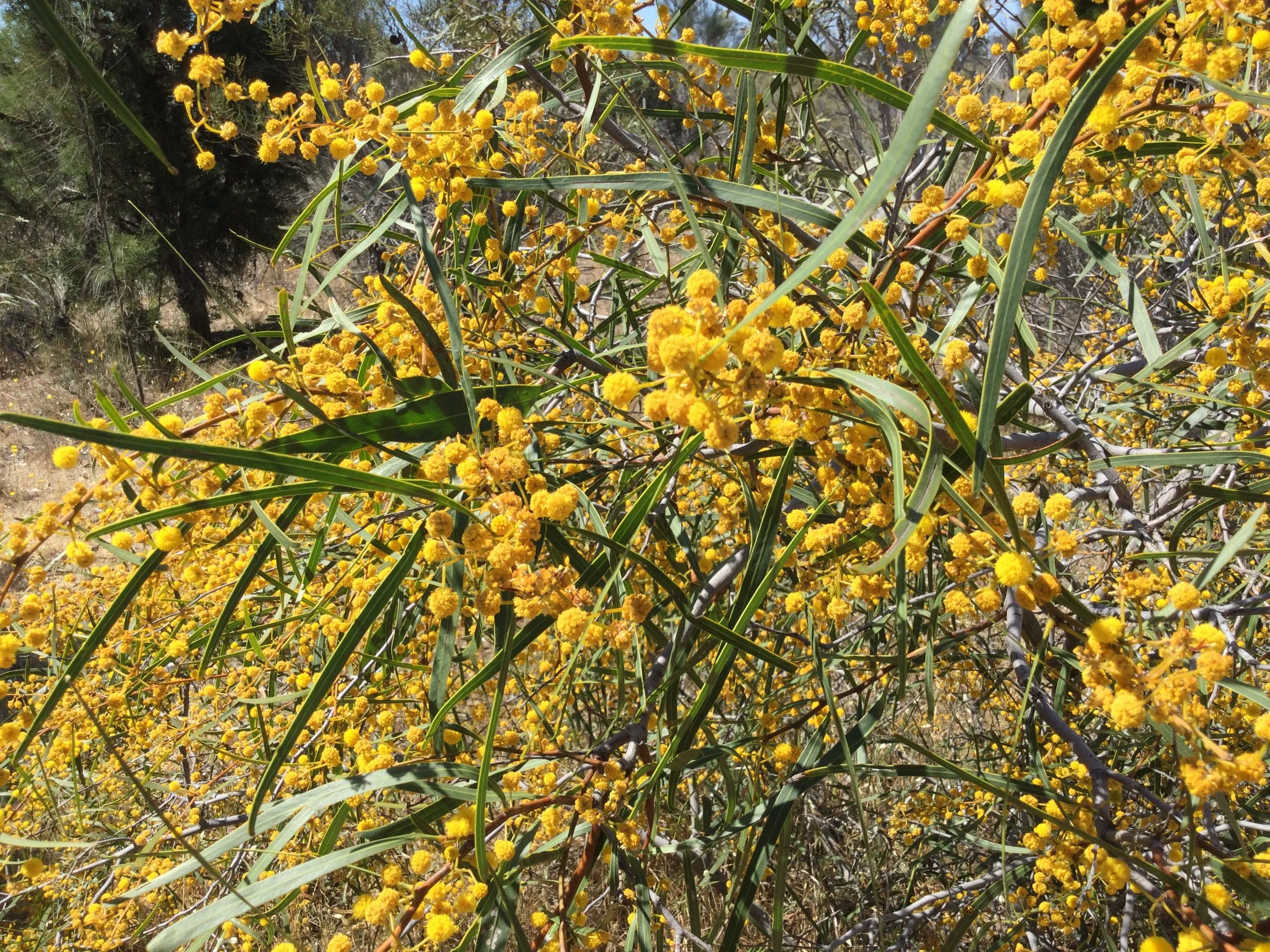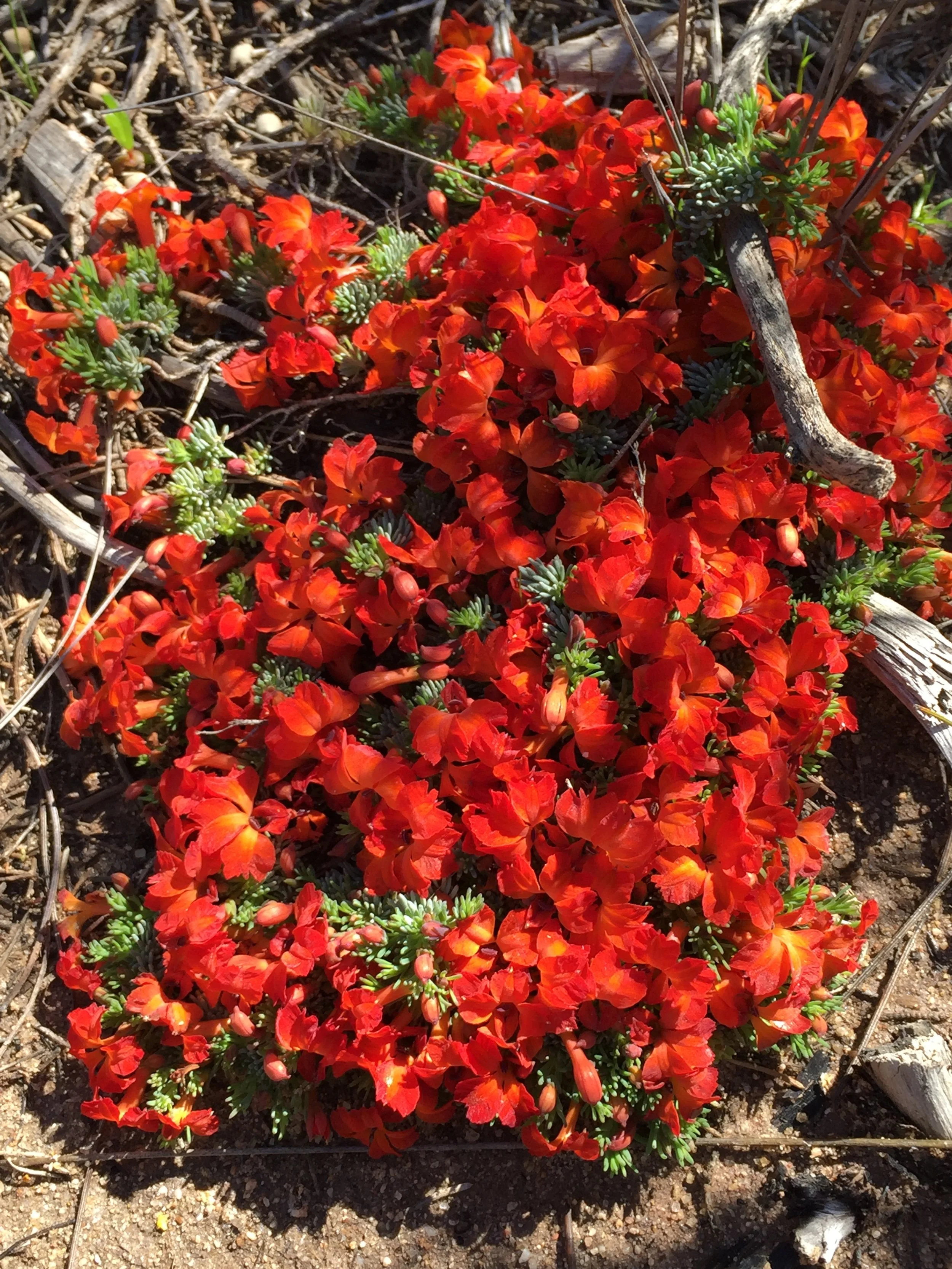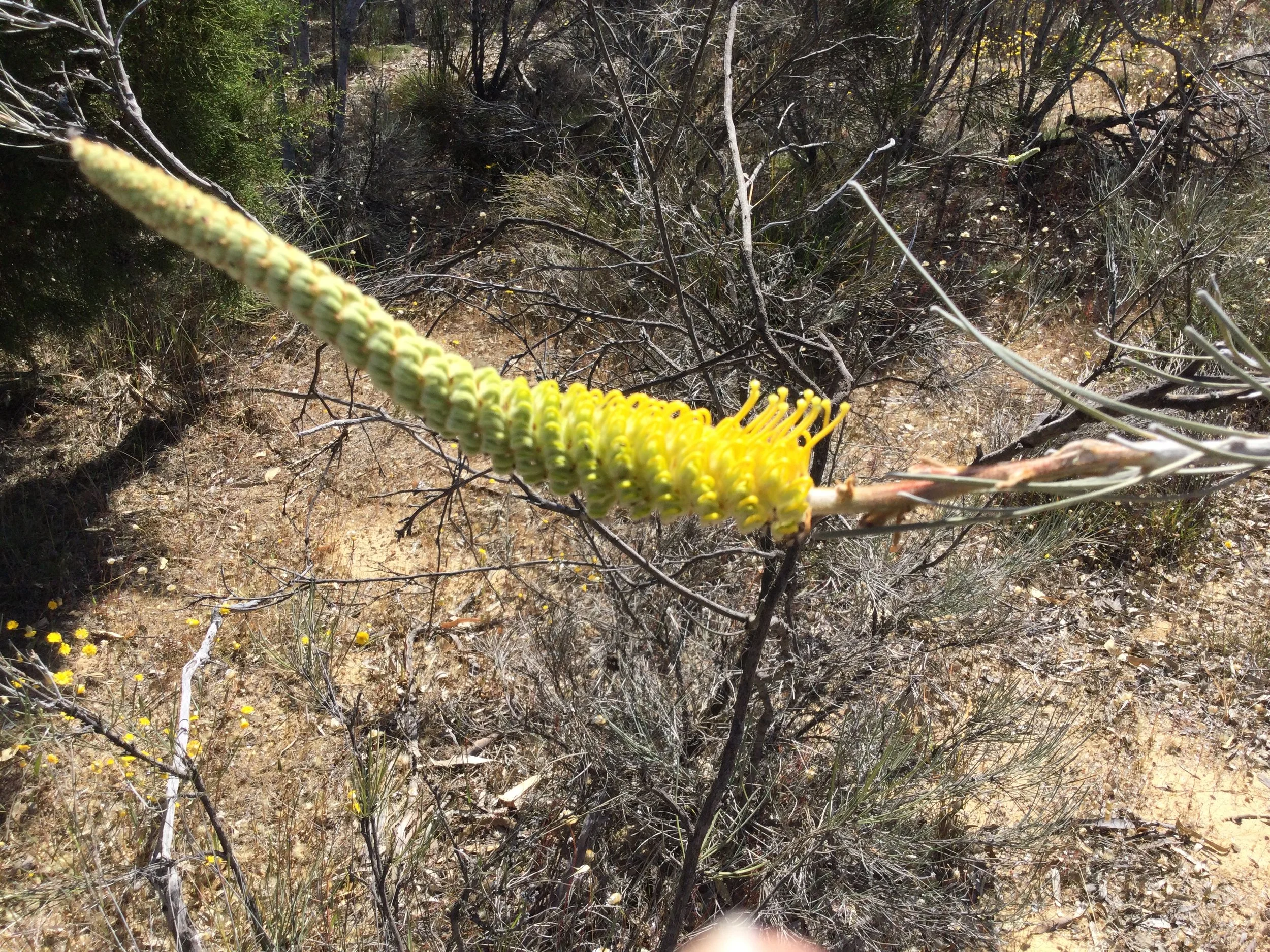Why The Wheatbelt
The Wheatbelt, a region the size of Britain in the south-west corner of Australia, lies in the South West Botanical Province, described as having one of the richest flora on Earth.(1)
Since 1830, and the arrival of Europeans, approximately 90% of the Wheatbelt (see Figure) has been cleared of its natural vegetation to make way for agriculture and grazing. This has had a catastrophic effect on the plants, animals, and the soil.
Photo – A satellite image of south-west Western Australia with the map of England superimposed on the cleared area, the Wheatbelt. Photo composite, from S.D Hopper(1) and K. Dixon.
FROM AN EXPERT
Dr Darrel Kitchener says…
“Eucalyptus woodlands once covered much of the flatter landscapes and low rises in the Wheatbelt and provided habitat for many unique animals. Unfortunately, a large part of its pre-European colonisation vegetation has now been cleared for agriculture, mostly as wheatfields and other agricultural crops, as well as for grazing livestock…
… Fortunately, some 12% (122.3 million hectares) of the original vegetation of the Wheatbelt has been set-aside as National Parks and as a myriad of 500 nature reserves or other categories of Crown land, including vacant Crown land. These are loosely connected in places by vegetation on road verges. Studies have shown that the survival of some of the vertebrate fauna groups is dependent on the size of the nature reserve as well as the vegetation variety.
The Imperatives
Economic
The region has provided a substantial contribution to Australia’s economy, and future support for the industry, particularly in the light of the projected changes in climate (2), has the Western Australian Government looking towards programs that enhance productivity from the soil. These include increasing biodiversity in agricultural systems (Nature Positive/Nature Repair Scheme), investing in permaculture (3-5), and re-evaluating restoration projects in the region.
As Charles Massey recounts in his book, ‘Transforming Landscapes’ ... “We now know that regenerative agriculture can be a great healer and restorer. Its principles and practices, in enabling the regeneration of healthy landscape function, and thus re-enabling processes of self-organisation, can see the return of healthy function to vital Earth systems and to human health. Key to this is reconnecting with, and understanding our places, our country, our home. And this, in turn, requires a capacity to understand how it functions. A new approach to agriculture has led to closer convergence with the Indigenous view of ‘country’...” (6).
Educational
The importance of understanding the Wheatbelt environment as a system of ecosystems underpins the management of existing reserves today. They serve as biodiversity refugia, and resources for school learning.
Some argue that agriculture in its present form in the Wheatbelt is unsustainable and needs to be modified if it is to survive. Several studies around the world have shown that increasing biodiversity in agricultural systems, as well as through permaculture, can enhance productivity. In addition, the changes in climate with global warming add further challenges to agriculturalists.
There is a perceived need in schools in the Wheatbelt region for students to have an increased understanding of the threats to the natural biological systems around them, and be equipped with the tools they will need in order to manage these lands. An innovative approach to school education is required (7, 8)
Cultural
...“Nyoongar people value connection to boodja, moort (family), and kaartdijin (knowledge). The Wargal, the dreamtime snake, gave us our knowledge of the seasons, and how to manage our boodja, and this helped us survive. This kaartdijin was passed down by our Elders and moort in stories about people, seasons, stars, when it’s time to move camp, when bush foods will be in season, and what a change in animals activities mean.
The stories represent our belief systems and knowledge of country.
We have a deep respect and obligation to our boodja. We took only what we needed from nature. We ate foods when they were plentiful and in season. We left some behind when we moved camp so that resources would be available the next year.”
From the late Kevan Davis IN: The Derdibin Gnamma Storybook. www.wheatbeltnrm.org.au
References:
1. Hopper, S. D., Harvey, M. S., Chappill, J. A., Main, A. R., Main, B. Y., Eds., The Western Australian biota as Gondwanan Heritage - a review, Surrey Beatty & Sons, Sydney, (1996).
2. Wait, A., Meagher, K., Climate change means Australia may have to abandon much of its farming. The Conversation. 2021.
3. David Lindenmayer, Macbeth, S., Smith, D., Young, M., Natural Asset Farming: Creating productive and biodiverse farms. CSIRO Publishing, Victoria, Australia, (2022).
4. Lindenmayer, D. et al., Wildlife Conservation in Farm Landscapes. CSIRO Publishing, Victoria, Australia, (2016).
5. Prober, S. M., Smith, F. P., Enhancing biodiversity persistence in intensively used agricultural landscapes: A synthesis of 30 years of research in the Western Australian wheatbelt. Agriculture, Ecosystems and Environment 132, 173-191 (2009).
6. Massey, C., Transforming Landscapes. Griffith Review 63 247-261 (2019).
7. Klahr, D., Zimmerman, C., Jirout, J., Educational interventions to advance childrens’ scientific thinking. Science 333, 971-975 (2011).
8. Michaels, S., Shouse, A. W., Schweingruber, H. A., Eds., Ready, Set, Science! Putting Research to Work in K-8 Science Classrooms National Academies Press, Washington DC, (2008).






